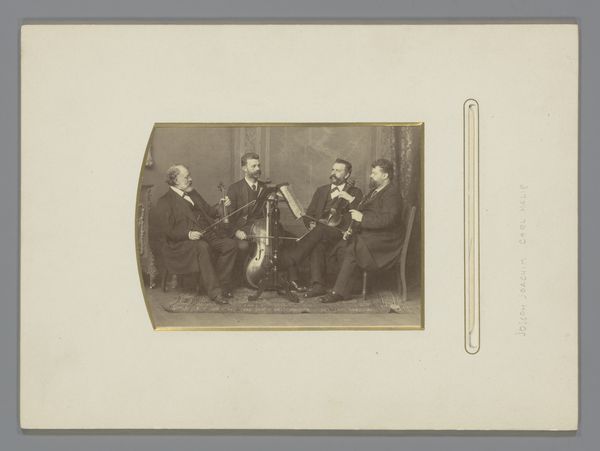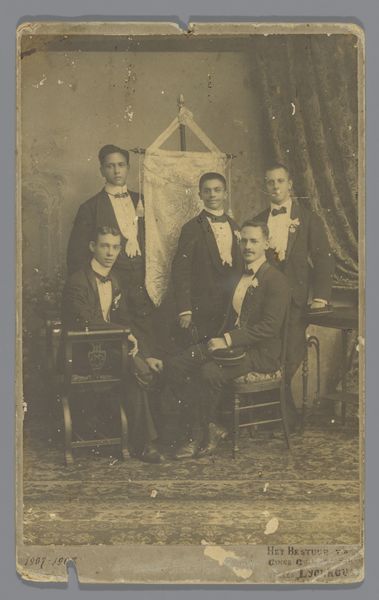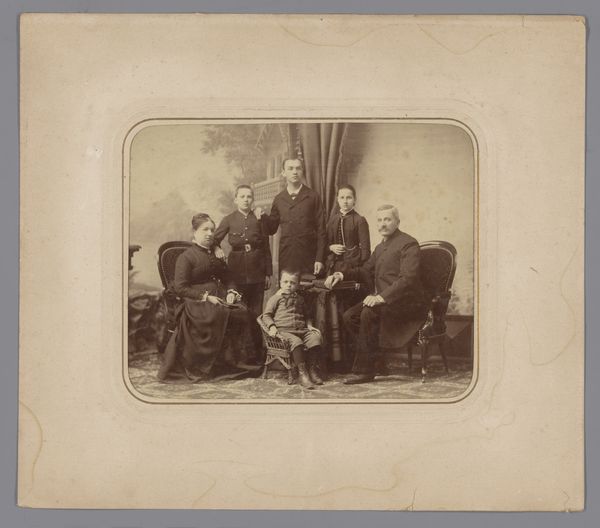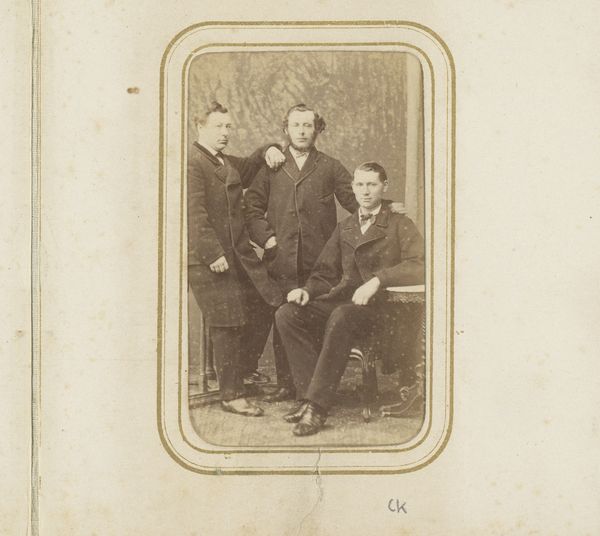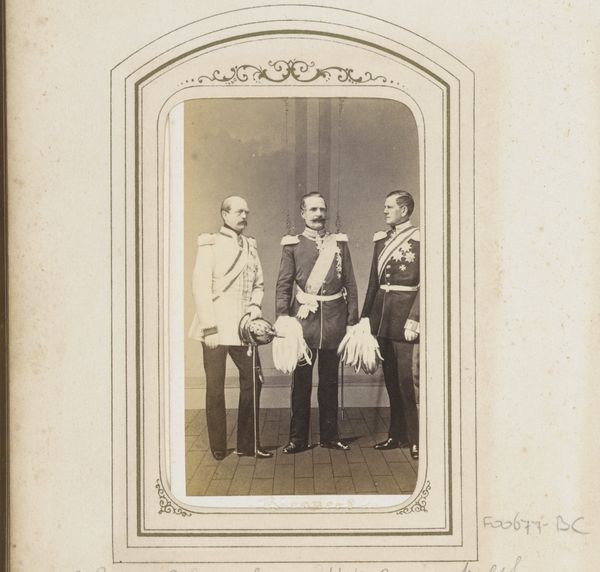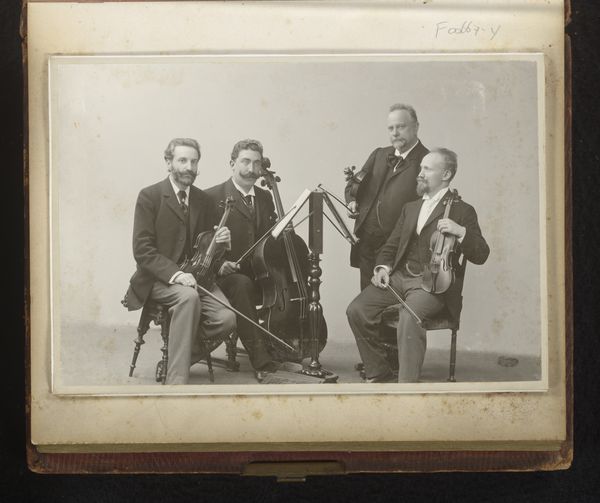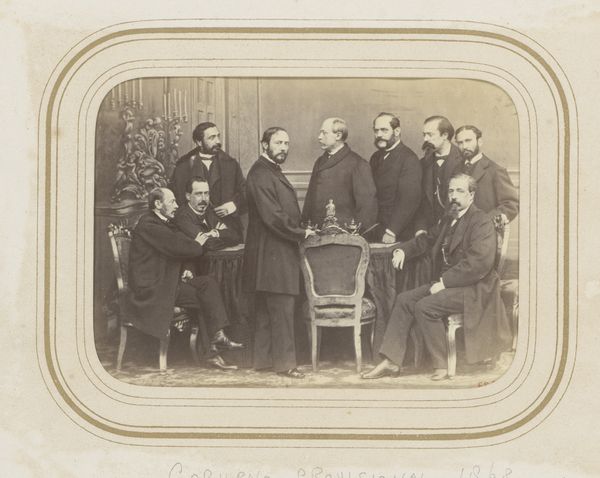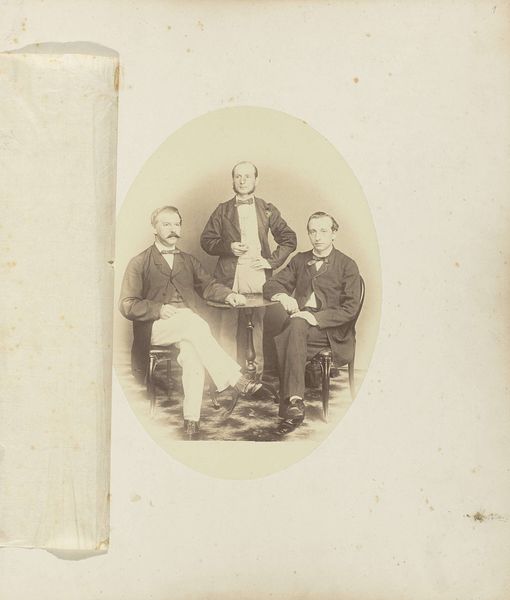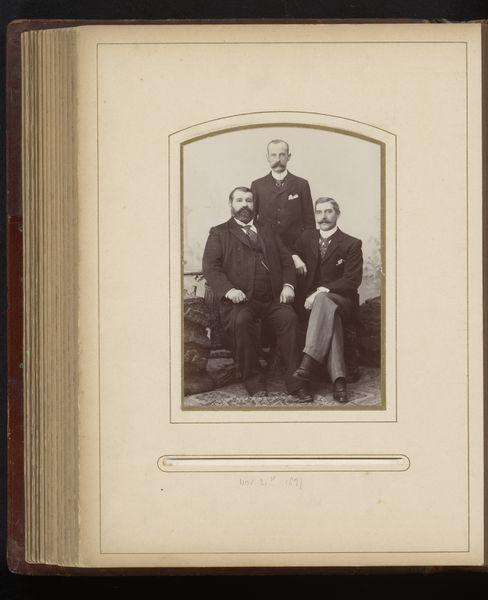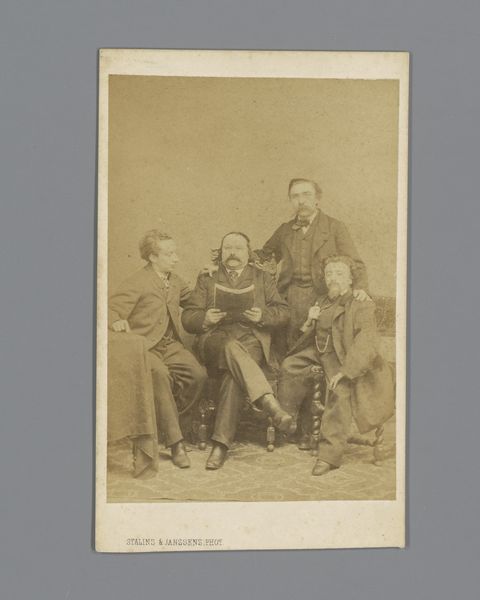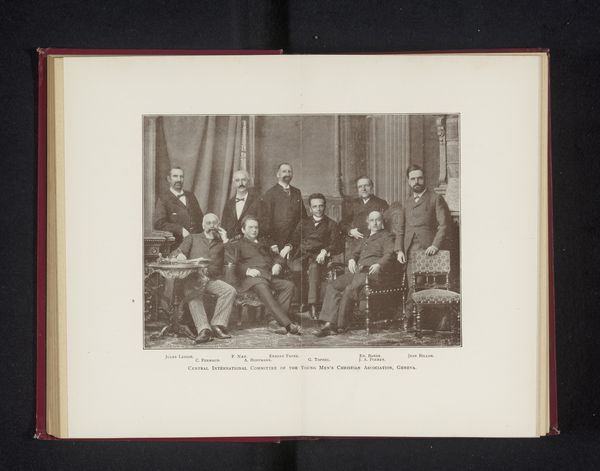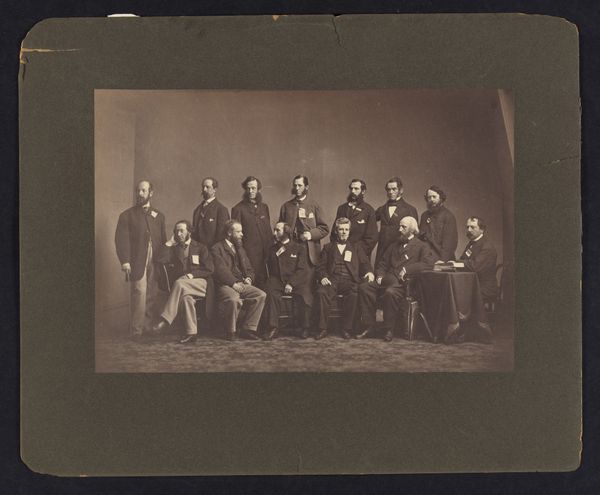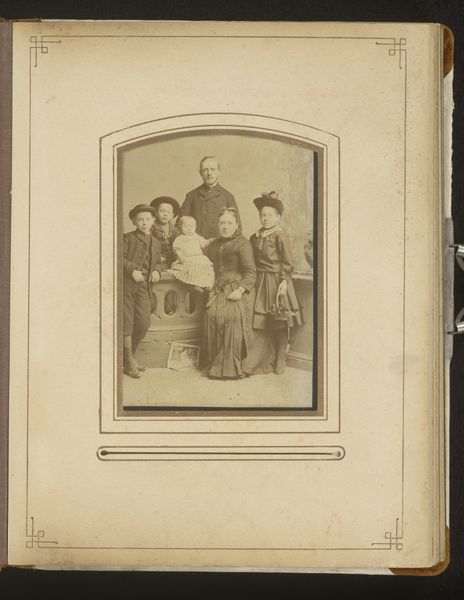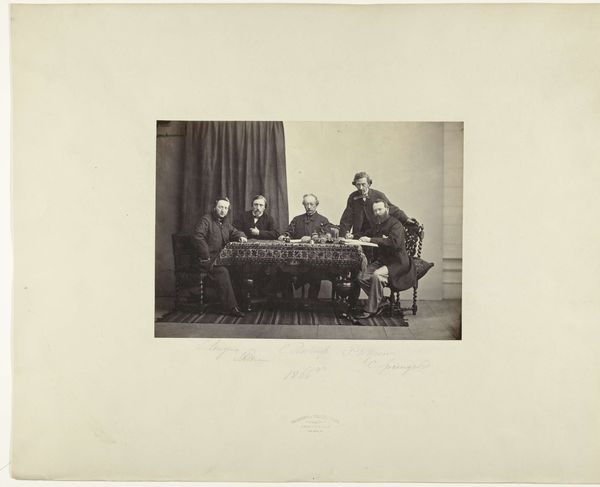
photography
#
portrait
#
photography
#
group-portraits
#
genre-painting
#
academic-art
#
realism
Dimensions: height 96 mm, width 134 mm
Copyright: Rijks Museum: Open Domain
Editor: This photograph, "Groepsportret van het Rotterdamsche Strijkquartet" from 1900 by Carl Emil Mörgle, captures a string quartet. They look so formal and serious! I wonder what context this was taken in. What can you tell me about its cultural background? Curator: It's fascinating to consider this image within the social landscape of the time. Group portraits like this, especially of musical ensembles, were often commissioned to project an image of cultural sophistication and civic pride. Think about who would commission such a photograph. Editor: So, it’s not just a snapshot; it’s making a statement. It looks almost like a historical document. Were string quartets really considered that important? Curator: Exactly! These musicians are elevated by the context they were portrayed in. Consider the staging, the formal attire, even the backdrop. It contributes to this visual message of cultivated taste and refinement. In 1900, the rise of classical music was strongly connected to the growth of civic identity and municipal pride. Why might cities at that time wish to promote such an image? Editor: To show that the city is sophisticated, and maybe that the patrons had money and standing. Like the museum itself almost, but for the town. Curator: Precisely. Photography in itself, during that era, was becoming a democratized method for building reputation. Now what is your take away about this portrait within this framework? Editor: It paints this picture of a cultural elite shaping the identity of Rotterdam. This portrait tells a silent story about who mattered in that city at that moment in history. Curator: It's precisely that social and cultural context that transforms this from a mere portrait into a fascinating historical document.
Comments
No comments
Be the first to comment and join the conversation on the ultimate creative platform.
